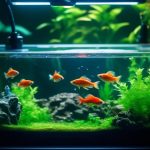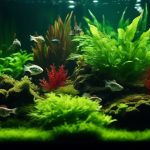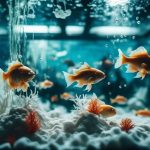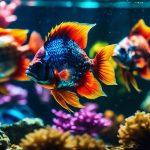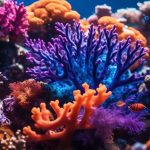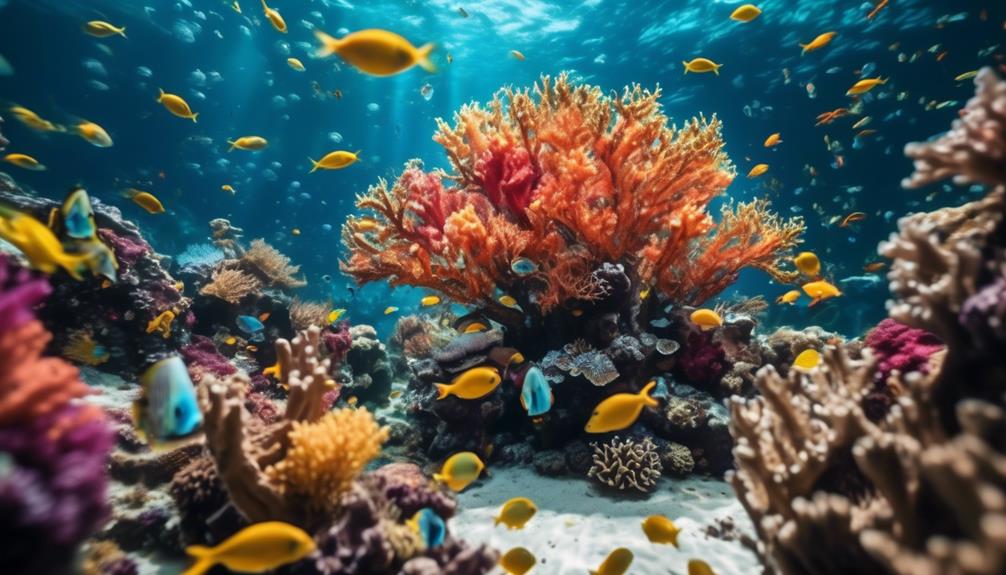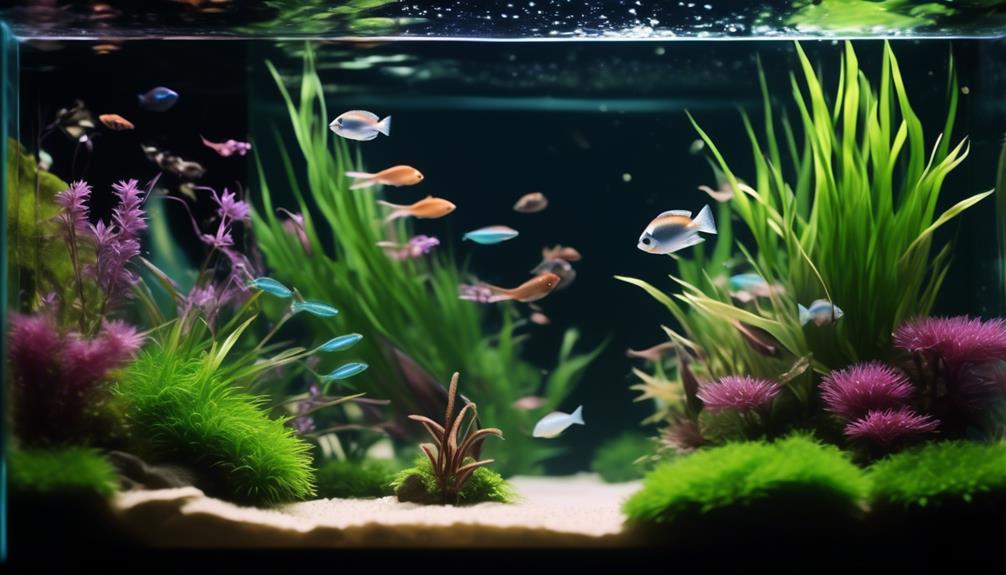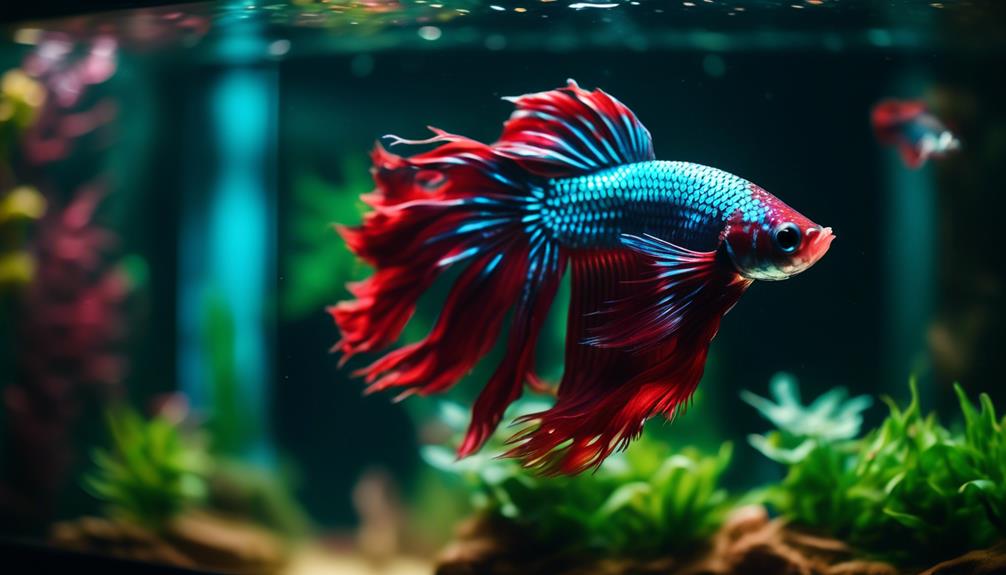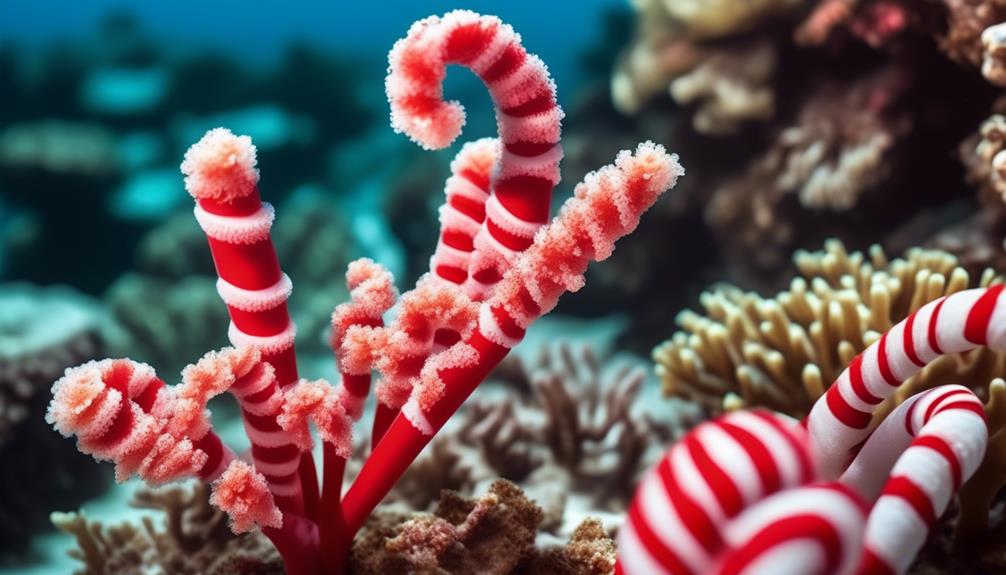The Electric Blue Maingano Cichlid, also known as Melanochromis Cyaneorhabdos, has earned a reputation as a personality powerhouse in the world of freshwater fish. With its striking electric blue body and distinctive black vertical stripes, this small-sized African Cichlid is a captivating addition to any aquarium.
But what sets this particular species apart is not just its mesmerizing appearance, but also its intriguing behavior and unique characteristics. From its active nature to its compatibility with other fish, the Electric Blue Maingano Cichlid offers fish enthusiasts a fascinating journey into the world of aquatic life.
In this discussion, we will explore the various aspects of this remarkable fish, shedding light on its captivating personality and the secrets it holds within its aquatic realm.
Key Takeaways
- The Maingano Cichlid is a freshwater fish with a strong personality and belongs to the African Cichlid group.
- It is a moderate care level fish that grows to about four or five inches in length and has an average lifespan of 8 to 9 years.
- The Maingano Cichlid is less aggressive compared to other Cichlid species and can be a suitable starter fish for novice fishkeepers.
- It is an omnivorous fish that prefers plant-based foods but can also eat live or frozen meaty food. Feeding should include a mix of vegetables and protein-rich food.
Characteristics and Behavior

The Maingano Cichlid, scientifically known as Melanochromis Cyaneorhabdos, is a small freshwater fish with a distinctive electric blue body and black vertical stripes. It is characterized by its active and territorial nature. This species exhibits moderate aggression levels, making it a suitable choice for novice fishkeepers interested in African Cichlids.
Maingano Cichlids are known for their social behavior, particularly when housed with other African Cichlids of similar size and temperament. However, caution should be exercised when selecting tankmates, as smaller or timid fish may be bullied. It is recommended to provide ample hiding spots and space to reduce aggression.
The Maingano Cichlid's territorial nature also necessitates a larger aquarium. By understanding and accommodating their social behavior and aggression levels, fishkeepers can create a harmonious environment for these captivating fish.
Tank Setup and Care
Continuing our exploration of the Maingano Cichlid, we now turn our attention to the crucial aspects of tank setup and care for these captivating African Cichlids.
Creating a suitable environment for Maingano Cichlids requires careful consideration of aquarium decorations and water quality management.
When it comes to tank setup, it is essential to provide plenty of hiding spots and territories for these active and territorial fish. Rocks and caves can be used as ideal hiding places, allowing the Maingano Cichlids to establish their territories and reduce aggression. Additionally, a large aquarium is necessary to accommodate their active nature.
Water quality management is crucial for the health and well-being of Maingano Cichlids. Maintaining a pH level between 7.8 and 8.6 and a water temperature around 75-82°F is recommended. Regular water changes are necessary to ensure optimal water quality, as poor water conditions can lead to stress and disease.
Feeding and Nutrition

To ensure the health and proper development of Maingano Cichlids, a well-balanced and nutritious diet is essential. These fish are omnivorous, but they have a preference for plant-based foods. The best food for Maingano Cichlids consists of a mix of vegetables and protein-rich food.
High-quality commercial Cichlid pellets should be offered as a staple part of their diet. In addition, Maingano Cichlids can also consume live or frozen meaty food. It is recommended to feed them frozen meaty food 3-4 times a week to provide a varied diet.
Establishing a feeding schedule for Maingano Cichlids is crucial to prevent overfeeding and maintain optimal health. By providing a balanced and diverse diet, fishkeepers can ensure the well-being of their Maingano Cichlids.
Tank Mates and Compatibility
After discussing the feeding and nutrition requirements of Maingano Cichlids, it is important to now explore their compatibility with other fish species and the factors to consider when choosing tank mates.
Maingano Cichlids are African Cichlids known for their territorial behavior, so it is crucial to choose tank mates carefully to avoid aggression. The best tank mates for Maingano Cichlids are other African Cichlids of similar size and temperament.
It is important to avoid keeping them with small or timid fish that may be bullied. Large, peaceful fish like catfish or plecos can be suitable tank mates as they are less likely to trigger aggression.
To deal with aggression in African Cichlids, it is recommended to provide ample space and hiding spots to reduce territorial disputes.
Breeding and Reproduction

Maingano Cichlids exhibit fascinating breeding and reproductive behaviors, making them an intriguing species to observe and study. Understanding Maingano Cichlid reproductive behavior is essential for successful breeding.
These fish are mouth-brooders, meaning the female carries the eggs in her mouth until they hatch. To encourage breeding, it is recommended to set up a separate breeding tank with suitable spawning sites such as caves or rocks.
Maintaining optimal water conditions, including proper temperature and pH levels, is crucial for successful breeding. After spawning, it is important to remove the male from the tank to prevent fry predation.
Both the female and the fry should be fed appropriate food for their size. After three to four weeks, the fry can be transferred to a larger tank without the mother.
Common Diseases and Prevention
Understanding the health and well-being of Maingano Cichlids is crucial for fishkeepers. Proper care and prevention of common diseases can ensure the longevity and vitality of these captivating African cichlids.
Two common diseases that Maingano Cichlids are susceptible to are Malawi Bloat and Ich. Malawi Bloat is often caused by poor water quality and nutrient-deficient diets. Overfeeding or feeding large amounts of food can lead to internal digestive problems and Bloat. Lack of fiber-rich food can also contribute to this condition, so including leafy greens in their diet is important.
Ich, or White Spot Disease, is caused by a parasite and is characterized by white spots on the fish's gills, fins, and face. To prevent these diseases, it is essential to maintain good water quality by performing regular water changes and ensuring the aquarium is clean. Additionally, feeding a balanced diet with enough fiber, avoiding overfeeding, and providing proper food preparation can help prevent these diseases.
Habitat Requirements and Water Parameters

To ensure the optimal habitat for Maingano Cichlids, it is essential to understand their specific requirements for water parameters and tank setup. These beautiful fish thrive in a large aquarium with plenty of hiding spots, such as rocks and caves, to satisfy their active and territorial nature. The pH level should be maintained between 7.8 and 8.6, and the water temperature should be kept around 75-82°F. Regular water changes are necessary to maintain water quality, ensuring the ideal tank conditions for Maingano Cichlids.
To illustrate the importance of water quality management, below is a table outlining the recommended water parameters for Maingano Cichlids:
| Water Parameter | Ideal Range |
|---|---|
| pH | 7.8 – 8.6 |
| Temperature | 75-82°F |
| Ammonia | 0 ppm |
| Nitrite | 0 ppm |
| Nitrate | < 20 ppm |
Frequently Asked Questions
How Can I Determine the Gender of an Electric Blue Maingano Cichlid?
The gender of an electric blue Maingano cichlid can be determined by observing physical characteristics such as coloration and fin shape. Breeding behavior, such as mouthbrooding by females, can also indicate gender.
Can Electric Blue Maingano Cichlids Be Kept in a Community Tank With Non-Cichlid Fish?
Electric Blue Maingano Cichlids are not recommended for community tanks with non-cichlid fish due to their territorial behavior. They are better suited for tanks with other African Cichlids of similar size and temperament.
What Are Some Common Signs of Illness or Disease in Electric Blue Maingano Cichlids?
Common signs of illness in electric blue Maingano cichlids include loss of appetite, lethargy, abnormal swimming behavior, fin deterioration, and discoloration. Maintaining optimal water quality and promptly treating diseases with appropriate medications are crucial for their health and well-being.
Are Electric Blue Maingano Cichlids Prone to Any Specific Genetic Health Issues?
Electric Blue Maingano Cichlids are not known to be prone to specific genetic health issues. However, careful breeding practices, including selecting healthy individuals and avoiding inbreeding, can help maintain the overall genetic health of the species.
How Long Does It Typically Take for Electric Blue Maingano Cichlid Fry to Reach Adulthood?
The growth rate of electric blue Maingano cichlid fry can vary, but they typically reach adulthood within three to four months. Optimal tank conditions for their growth include maintaining proper water parameters, providing suitable hiding spots, and offering a balanced diet.
